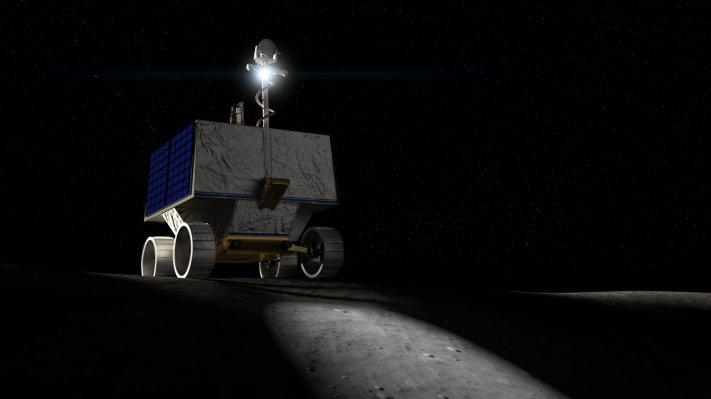NASA has selected a company to fly its VIPER rover to the moon. Its mission will be a crucial step in its Artemis program as it will help the agency determine where and how it can establish a long-term presence on the lunar surface. NASA announced on Thursday that Astrobotic will be its commercial partner in delivering the payload, with the mission currently scheduled for a 2023 moon surface landing.
VIPER stands for “Volatiles Investigating Polar Exploration Rover,” and the roughly golf cart-sized robotic rover will be scouring the moon’s south pole region for ice, as well as water beneath the surface if it exists. This is a key intermediary step for the Artemis program, which still intends to return the next American man and the first American woman to the lunar surface by 2024. Having a handy source of water will be an important part of establishing any long-term sustainable base on the moon, since it can provide the necessary ingredients for a self-contained lunar fuel production facility.
NASA’s choice of Astrobotic for this mission is not surprising. The agency has already contracted Astrobotic as part of its Commercial Lunar Payload Services (CLPS) program. The company is set to transport scientific payloads to the lunar surface aboard its Peregrine lander for its first CLPS mission in 2021, using a ULA Vulcan rocket. This is a separate contract, timed for a 2023 window.
Astrobotic will be using its Griffin lander for this VIPER mission, not Peregrine. Griffin is a much larger lander than Peregrine, standing roughly 6.5 feet (2 meters) tall, with the ability to carry payloads just over 1,000 pounds (454 kilograms.) It can land within 328 feet (100 meters) of a specific target, and can detect and avoid hazards as small as 6 inches (15 centimeters) across.
[gallery ids="2001303,2001304,2001305,2001306"]
Viper will essentially max out the payload capacity of Griffin, since the rover will have a mass of approximately 1,000 pounds (454 kilograms) when complete. It’ll be outfitted with three water-hunting sensors that will fly on-board earlier payload delivery missions in 2021 and 2022 for testing, and also a drill capable of piercing up to three feet below the lunar surface.
Astrobotic will be responsible for everything from launch to landing of the rover, and while it will be using Griffin to actually carry VIPER to the surface, it’ll be contracting with a launch provider to get it to the moon to begin with. The company hasn’t yet picked who that will be, but it’s likely to be someone with a proven track record, like ULA or SpaceX.
